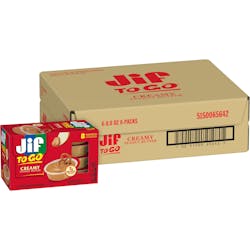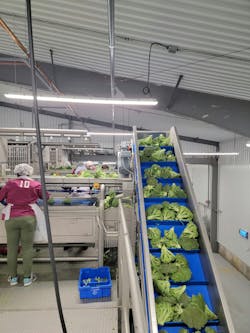Stratus Group has sold its beverage products in retail outlets since the company was founded in 2016. Two years ago, the company’s leadership decided it was time to step into a new world and offer Koe Kombucha and Perfect Hydration Alkaline Water to the foodservice market.
The move gave the company access to a new group of consumers, specifically those looking for immediate thirst-quenching opportunities, explains Louisa Lawless, the company’s chief strategy officer.
“Consumers in this channel are also more likely to try new things when they're out and about, so foodservice presents an awesome opportunity to capture a new audience,” Lawless adds. “Foodservice accounts can bring unparalleled visibility and cachet that's impossible to earn from traditional retail.”
But the road from retail to foodservice, or the other way around, is full of potholes and challenging stretches. Food processors traveling that route need to develop new marketing strategies, forge new distribution partnerships, and often change packaging and formulations.
“The go-to-market strategy, the business requirements, of retail and foodservice are pretty different,” says Mark Hass, CEO of Helmsman Group. “You may be making fundamentally the same product, but how it's packaged, how it's utilized, how it's sold, how you create product awareness involve completely different strategies.”
Start with strategy
The fundamental difference between foodservice and retail is that the buyers – all along the chain -- are in a different state of mind. Buyers for retailers are seeking products that look appealing on grocery store shelves or coolers, and their ultimate customers – consumers – normally buy stuff that is destined for their cupboard or refrigerator on the way to their dining table.
In contrast, buyers for foodservice are generally more interested in ingredients or elements of some final product, rather than finished food, and their ultimate customers eat those products moments after acquiring them, such as in a restaurant, school cafeteria or sports facility.
Lawless explains that the buyers in each channel simply have different goals.
“It’s important to keep in mind that buyers in various channels are solving different problems for the consumer and face different challenges, so they often have different ways of looking at products,” she explains. “For instance, a foodservice operator needs products that solve immediate-consumption needs – whether that's flavors that pair with their menus, ingredients that align with their very well publicized philosophies, or products that will be purchased throughout all day parts
“Customers in this channel also love to pioneer new products and care about the versatility of a product – i.e., can it go in a cocktail or mocktail, can they market it as healthy, can it be used as part of an upsell?”
Those differences mean a company serving both markets must treat them as distinct channels.
For example, products from J.M. Smucker Co. are commonly found in both retail and foodservice settings. To the consumer, Jif peanut butter, Smucker’s fruit spreads and Folgers coffee look the same once they’re on a plate or inside a coffee cup regardless of whether they were purchased in a restaurant or grocery store, but at the manufacturer those products move through totally separate channels.
“Our traditional retail and foodservice – or Away From Home – businesses are distinct,” says Frank Cirillo, senior manager, corporate communications for Smucker. “We are serving unique customers and consumers.”
Different distribution channels
As Cirillo notes, manufacturers typically have separate internal channels for foodservice and retail, and that division is matched in distribution channels. The truck carrying retail packages of frozen broccoli from Harvesting Good’s production facility to a Hannaford Supermarket distribution center in Maine is not going to swing by the local high school to drop off some foodservice packages for the school’s lunch program. Likewise, the Sysco delivery van carrying Harvesting Good products to a university cafeteria is not stopping at a Hannaford on the way.
Even though the food they carry is essentially the same, the distributors selling to retail and those selling to foodservice are almost completely different.
Harvesting Good, which is a for-profit subsidiary of Good Shepherd Food Bank, sells and ships frozen broccoli directly to Hannaford Supermarket, with which it has a long-standing partnership connected to the food bank. In contrast, for its 473 foodservice customers, the company partners with Sysco and several smaller distributors.
Many companies in the retail space find it challenging to shift to foodservice distribution. But working with a company like Sysco, which is considered a “broadline” distributor because it carries essentially any product a foodservice customer requires, is necessary because some institutional customers otherwise won’t buy from a vendor.
“Sysco is a helpful and good partner, but we have found that the enthusiasm and the excitement to purchase and to serve Harvesting Good product resides primarily with the schools, the universities, the healthcare organizations,” says Matt Chin, president of Harvesting Good. “Sysco is definitely not as excited as the end customer, because the solution we provide is to help [the schools and institutions] meet their internal local procurement goals.”
Melissa Montejunas, director of sales and marketing for the company, explains that specialized distributors are often more enthusiastic about working with them. Those specialized distributors have a better understanding of the needs and goals of schools, which are key customers for Harvesting Good.
The fact is that foodservice distributors typically receive more requests from manufacturers to carry product than they can efficiently manage, so they are selective. Lawless says she learned that foodservice distributors are more likely to take on a new product if the manufacturer can first find customers for it.
“Foodservice can be a tough sell,” Lawless says “You have to work in tandem to earn accounts before the distributors will bring your products in.”
Hass adds that persuading a foodservice distributor to carry a new product often involves providing a business plan that shows that the distributor will succeed with the product.
“You need to prevail upon the foodservice buyer in a way that is very clear and offers solutions,” he says. “If you're a CPG brand, it doesn't matter how big you are. [They will ask] ‘Why should I take this, put this into my inventory, have this in my warehouse? How am I going to sell this? How am I going to make money?’ ”
Some food manufacturers rely on brokers to help them secure distributors, Hass says. Brokers have contact with all the players -- the manufacturer, distributor and foodservice buyer – so they can be a valuable go-between. Brokers tend to be specific to channels – universities, restaurants, military installations, etc. – so a food manufacturer may need to work with several, Hass adds.
Formulation and packaging differences
In some cases, products destined for different channels are actually slightly different products. For example, Cirillo says Smucker uses “distinct processes” for some beverage products sold into both channels, notably for liquid coffee.
Another example can be found among the products sold by Whitakers Chocolates. The company, which dates to 1889, began as a provider to foodservice – such as boutique hotels and upscale restaurants -- and didn’t move into retail until the 1960s, says Gemma Whitaker, the company’s marketing director. All of the company’s products are crafted in the same factory, but in some cases the products differ between markets.
“While the overarching quality and care in production remain consistent, the formulations, or recipes, can vary slightly between markets,” Whitaker says. “This variation is primarily due to product size differences and packaging requirements. For example, many of our products designed for the catering sector, like fondant creams, are typically foiled and therefore smaller in grams compared to their unfoiled retail counterparts.
“These slight adjustments ensure that each product is perfectly suited to its intended market, meeting the unique needs and expectations of our diverse clientele without compromising on the exceptional quality and flavor that Whitakers Chocolates is known for.”
Marketing differences
Companies making the transition from retail to foodservice, or vice versa, typically need a different marketing strategy for each. Naturally, for many food products, consumer advertising supports both markets. But reaching the intermediate buyer – the grocery store manager in the case of retail and the executive chef in the case of foodservice, for example – clearly requires a strategy specific to the market.
Harvesting Good leverages the relationship between its parent organization and Hannaford’s to get its frozen broccoli into that retailer, and Hannaford’s subsequently offers them guidance on marketing to their customers, Chin says. Several Hannaford’s employees sit on Harvesting Good’s marketing committee, for example, and Hannaford’s has an internal marketing program that helps Harvesting Good reach store customers.
But the company does not have that advantage when it comes to its foodservice clients. For them, the company leans into the “buy local” concept, which works well for many institutions.
“We're really utilizing this huge ‘local’ push that we're seeing within the community and within the region right now,” Montejunas says. “And we're jumping on that bandwagon a little bit because they're getting a lot more funding, both state and federal, to procure local products.”
Montejunas says Harvesting Good also appeals to the sustainability goals of schools, hospitals and other institutional clients. For example, they have created recipes that use broken pieces of broccoli. This helps their clients maximize yield from their broccoli, since some breakage is inevitable when frozen produce is moved around.
Whitaker says her company’s marketing approach to the foodservice channel focuses on the quality, heritage and trustworthiness of the brand, characteristics that appeal to industry professionals.
“On the other hand, our consumer marketing for retail products is designed to connect directly with the end consumer, highlighting the unique qualities, flavors, and the luxury experience of indulging in Whitakers Chocolates, aiming to create a more personal and emotional connection,” she says.
Despite the myriad challenges involved in selling into two channels, making the effort pays off for many food manufacturers.
“It occurs frequently, especially when brands have an equity that can be effectively leveraged across both spaces,” says Andrew Bott, proprietor of Bott Consulting. “Expanding into retail or foodservice can be a great opportunity to diversify customer base and sales opportunities, but it can also add complexity and require different capabilities and resources to execute. Brands should carefully consider how moving channels can fit into an overall business strategy.”






